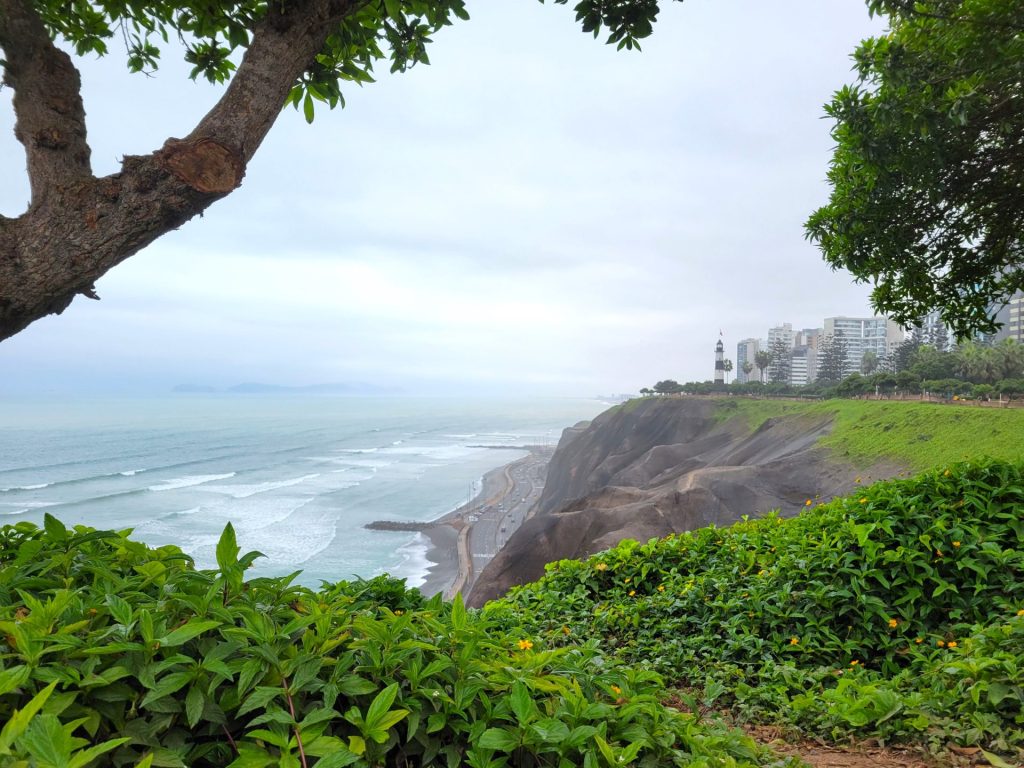
Lima greeted us with its customary overcast skies and many warm smiles. We found the city to be very friendly, especially for one of its size. The ocean views were hard to beat and we enjoyed abundant fresh produce. Our apartment in the Miraflores neighborhood was close to multiple parks, including one with scores of friendly cats. There are a handful of impressive museums too. We did have air quality problems for about a third of our month-long stay and we found it necessary to alter our normal behavior because of it. But the cloudiness and pollution weren’t enough to completely mar our stay, so overall the silver linings won out.
Peru’s capital is the third largest city in Latin America, behind only São Paulo and Mexico City. Unfortunately, it lacks a decent public transit system, so traffic (and traffic exhaust) can be overwhelming a lot of the time. But most tourist activity takes place in one of two adjoining coastal neighborhoods on the southwest side, Miraflores or Barranco. That means it’s pretty easy to get around on foot without needing to rely on taxis or figure out the convoluted bus system.
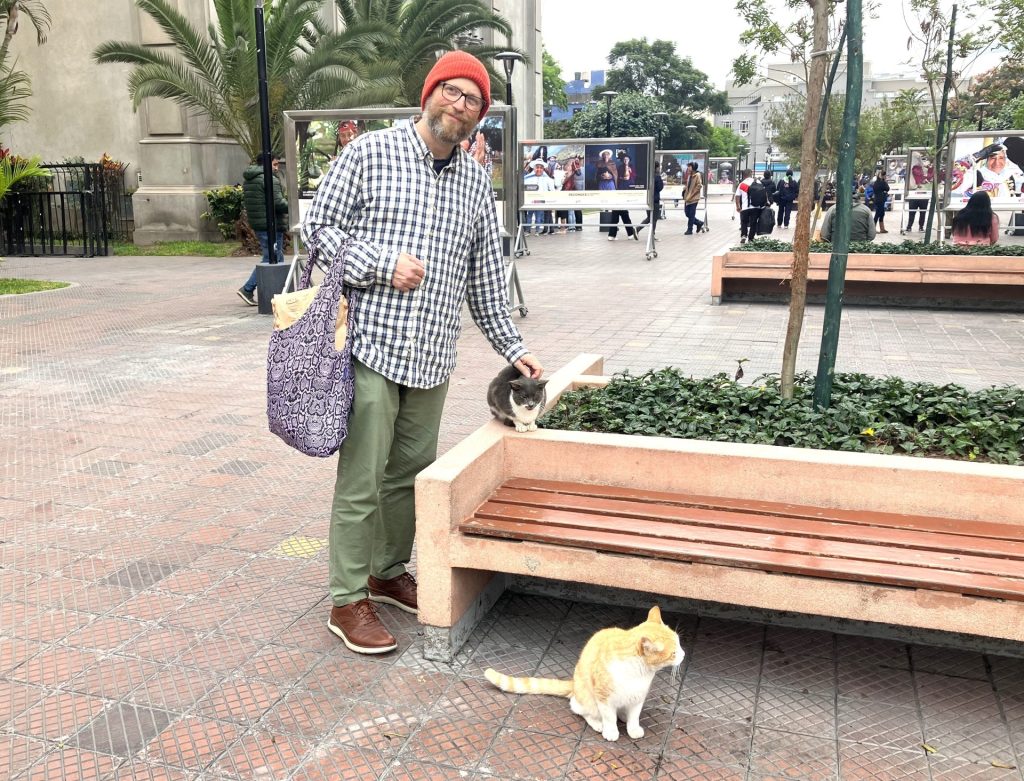
Due to close proximity to the equator and Pacific Ocean, Lima has year round temperate weather with almost no rain. Most days are overcast and humid, especially during the winter like our visit. We only saw the sun on 3 days out of the 30 that we stayed. Mornings can have some foggy mist, but that’s about it for precipitation. Lima averages less than an inch of rain per year.

Due to the mild climate and lack of rain, building construction is unique. On almost every building that we saw, including ours, the windows were only single panes of glass with a slight overlap between them. They open by sliding to the left or right, in front or behind the neighboring window. Nothing separates them besides a tiny strip of felt. This keeps the dust out, but does almost nothing to block sound. This is the first time we’ve experienced this odd construction technique in all of our travels. We noticed this on several buildings, not just ours, so it’s apparently quite common.
Friendly Greetings
We were a little surprised by the friendly dispositions that greeted us. The Peruvians that we met were very warm and welcoming. It was a noticeable change from Chile, Argentina, and Uruguay, where people aren’t cold, but they aren’t overly friendly either. We had conversations in the park with folks wanting to practice their English and they didn’t even want to sell us anything. Well, some of them did, but that’s okay. In truth, the amount of English speakers kind of caught us off guard as well, after spending the last several months conversing almost exclusively in (bad) Spanish. It felt really strange at first, but of course made everything about our stay easier.
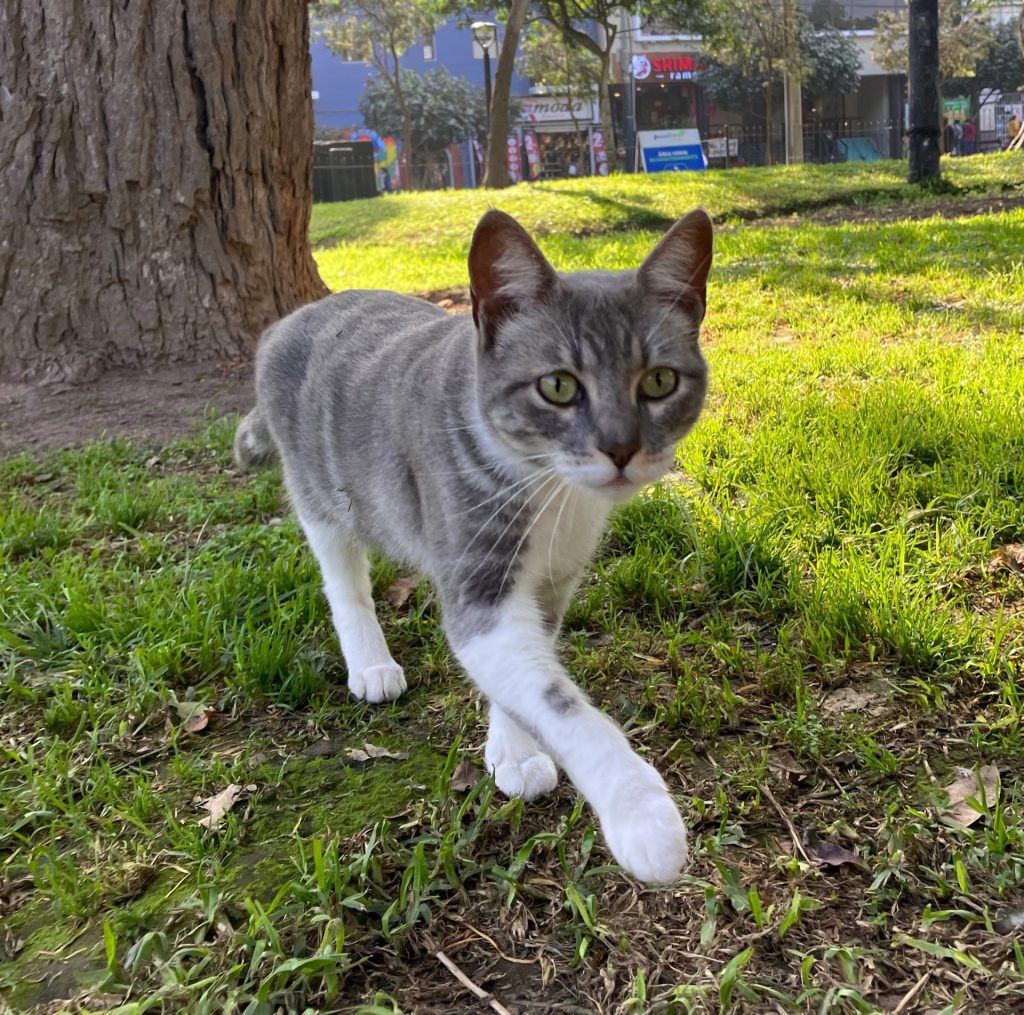
Cliffs And Parks
Unlike most cities on the ocean, Lima has large cliffs that separate the city from the sea. While it varies throughout the city, it’s common to be around 150-180 feet (50-60 meters) above the water. Every half mile or so there are stairways built into these cliffs to offer access to the shore, where surfing is the dominant scene. At the tops of these cliffs in the Miraflores neighborhood are a series of parks that offer sweeping views and a peaceful break from the traffic in the more chaotic parts of the city. They are also good places to watch surfers from afar or birds up close. We spent several hours observing the hummingbirds, vermilion flycatchers, and bananaquits go about their business.
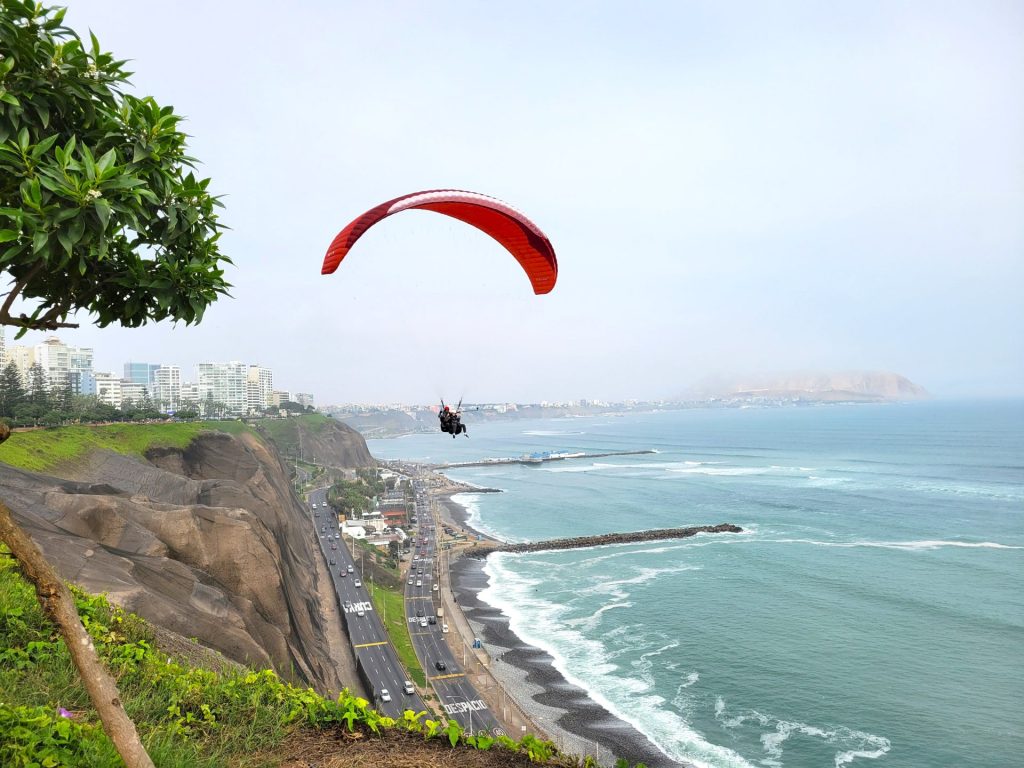
Rocky Shore And Surfers
The shore doesn’t really have a beach, as there’s no sand. Instead it’s mostly filled with large rocks. When the waves are heavy, the sound of them crashing into each other is even loud enough to drown out the car noise, which is substantial. That’s because there’s a major 6 lane highway between the coast and the cliffs (as you can see above). Between the rocky shore, lack of sunshine, and constant traffic, the shore isn’t all that popular for non-surfers, at least compared to the parks 150 feet above. Of course we like to go our own way and spent several afternoons walking by the water in order to watch the surfers and look for crabs. Also, the breeze generally blows in from the ocean, which means that the air quality along the shore tends to be better than the rest of the city despite being right next to all the traffic. That part definitely appealed to us.
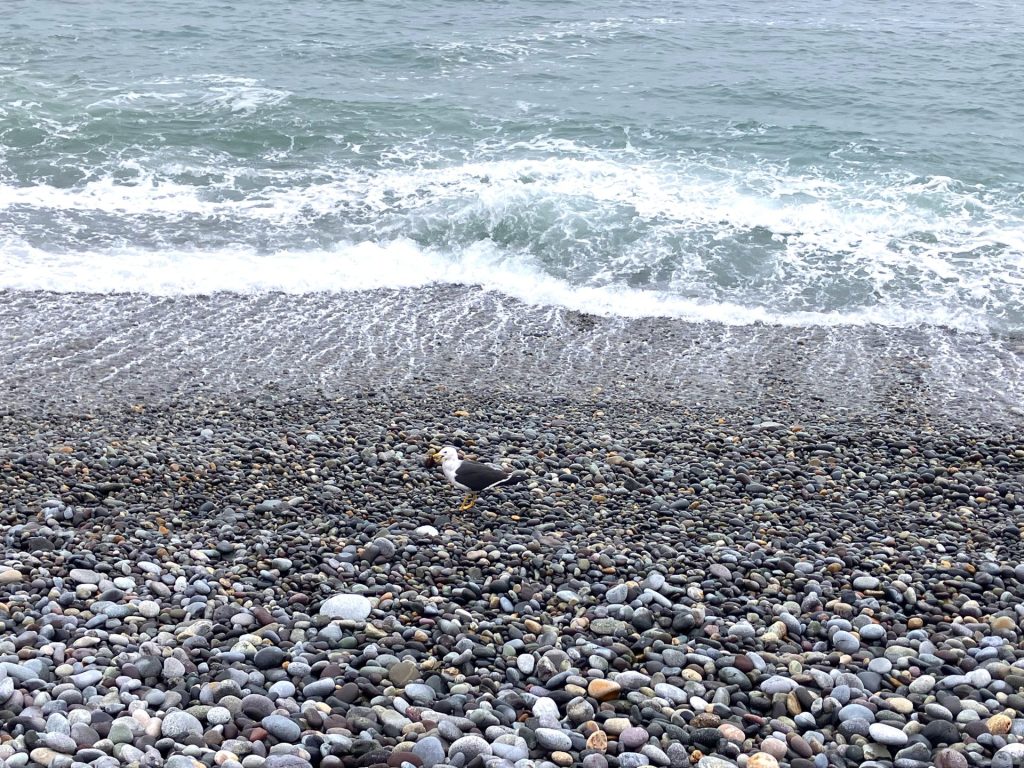
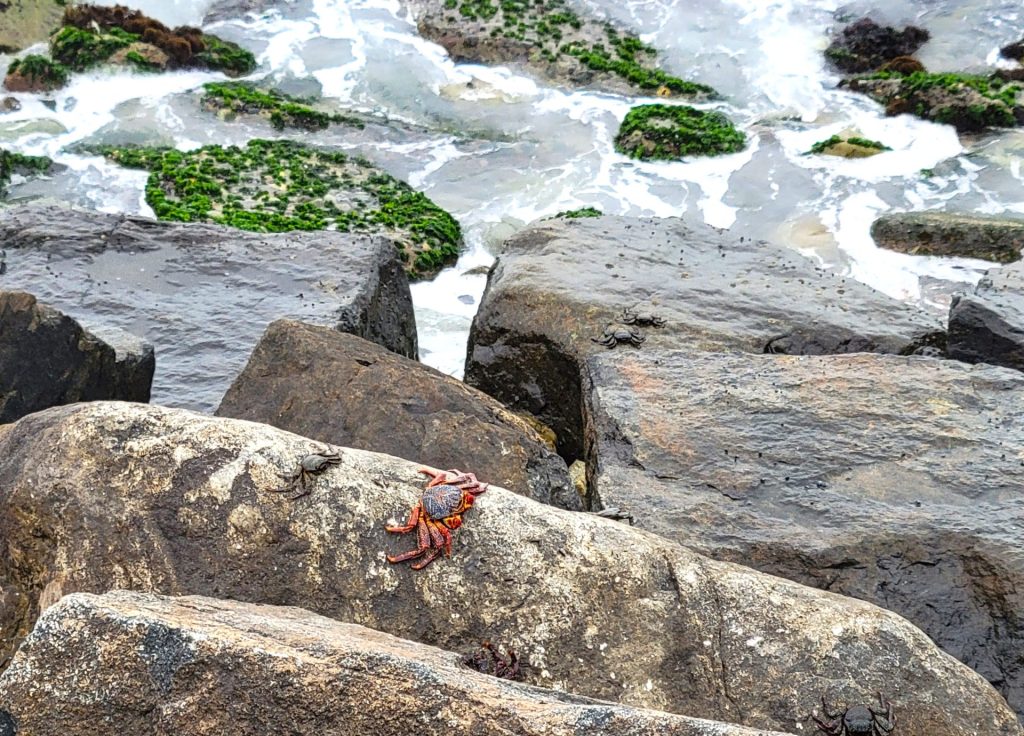
Poor Air Quality
Unfortunately, we had a number of heavily polluted days, especially right at the beginning of our stay. I noticed AQI readings at 150 or higher often during our first 10 days. That’s well above where I function well, and my throat and sinuses really bothered me. It was kind of miserable for that first week. At least for me. Luckily for Katie, she is less sensitive to the air pollution. But even she has some minor problems once it starts getting closer to 200, which we did see a couple of times.
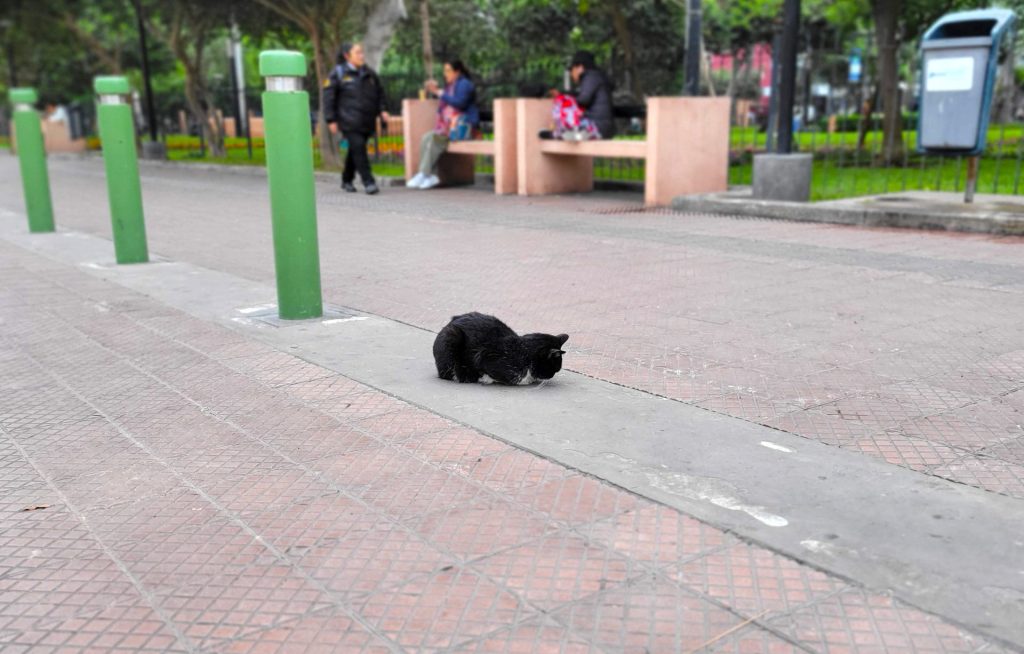
After those initial struggles, the remainder of our month was much better with AQIs hanging around the high double digits. At 100 or lower, I’m generally okay and only have minor symptoms like a slight cough or sore throat. We learned quickly that we needed to plan all of our outings to be back before afternoon rush hour in order to avoid the most concentrated vehicle fumes. Everyday around 4pm and later the air pollution seemed to get pretty bad no matter what the official readings were.
Speaking of official readings, the only site I’ve ever found with historical air quality data is www.aqicn.org. I’ll often check it for current air quality as well. They have the air quality color coded, with green being good, yellow okay, and red or purple bad. This code is shorthand for how bad the air has been historically, allowing quick determination of common months of good or bad air. Despite us living through over a week of 150+ AQI readings, the actual historical record for June shows almost nothing that bad.
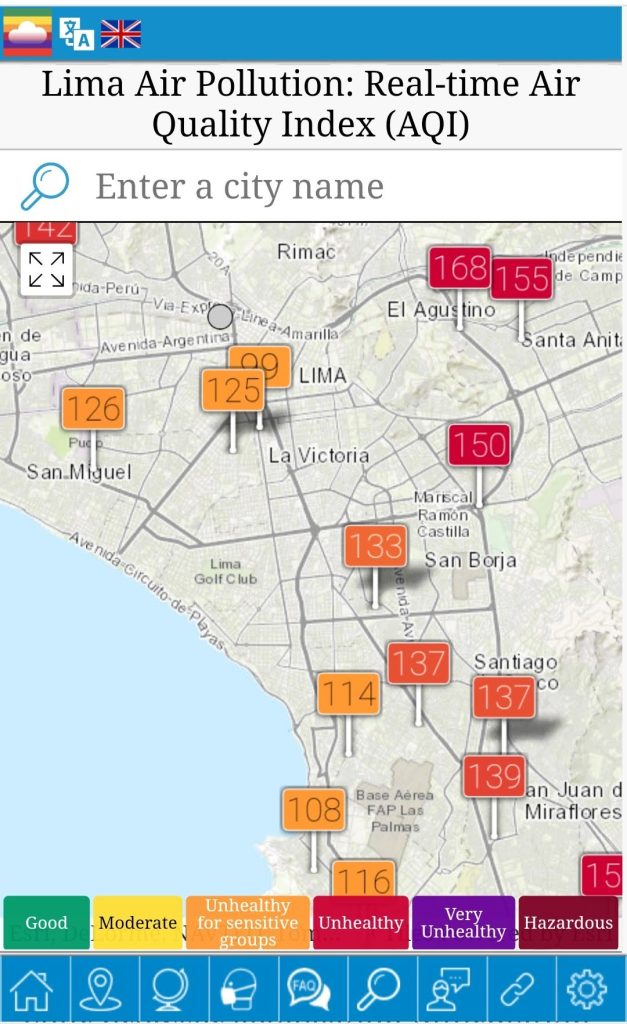
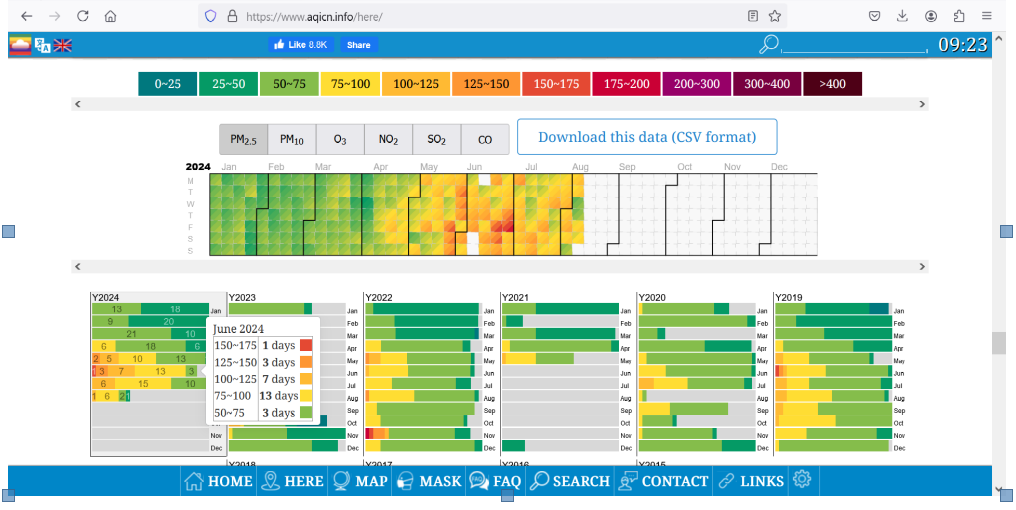
Seeing the above after the fact makes me less trusting of their historical accuracy, since I have a first hand account of many days well above what’s being shown. In playing around with the site, it appears that they are showing the average daily readings, not the peak readings. That doesn’t make any sense to me, since the peak is what’s most important. That’s when I’m going to feel bad and be unhappy. I’m not sure how to handle that going forward, other than revise all of these numbers up and plan accordingly. I have searched around and it appears that AQICN is the only game in town. (There is waqi.info, but that uses the exact same data.) If anyone knows of another site with historical air quality data, please let me know.
Cats Galore
In the heart of Miraflores, JFK park and the surrounding areas is a cat haven. Dozens of them live there. Despite the large numbers, the feline residents seem well taken care of and have housing options ranging from temporary cardboard boxes to more permanent cat hotels. Of course they sleep all over at all times of the day. People come through and feed them often too, but food is not necessary to capture their love. Many are eager to spend time warming themselves on any willing lap. So just sitting on one of the many benches can allow you to make a new friend. Which we did a bunch.
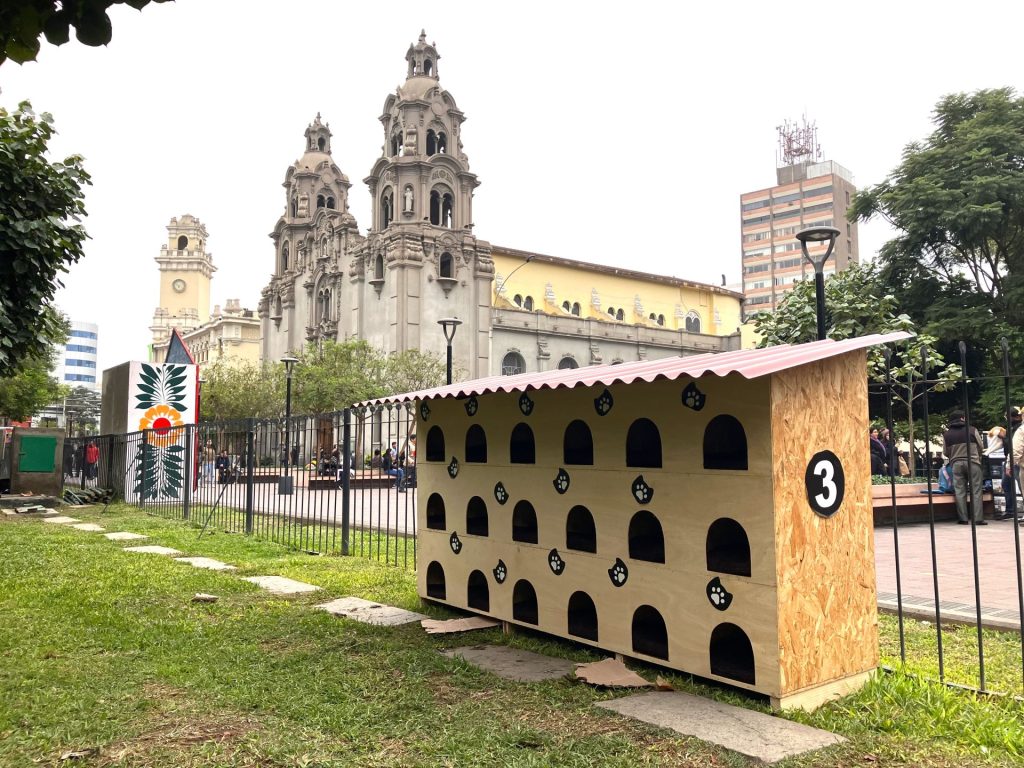

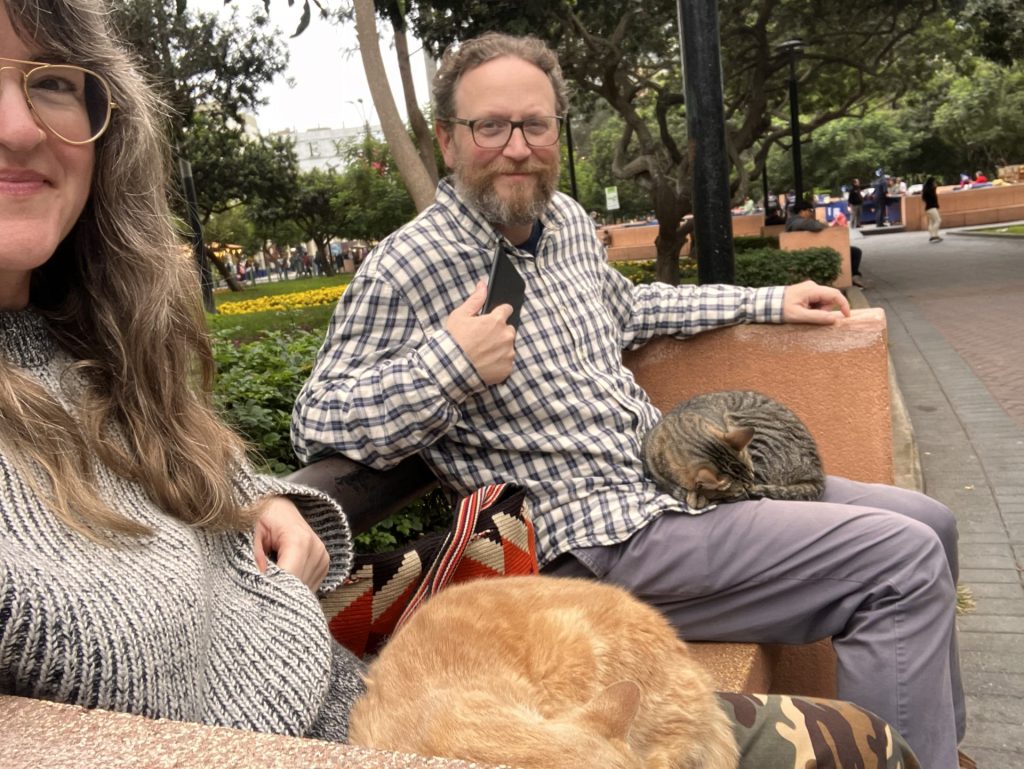
Having a random cat on your lap turns the park into a very friendly place. Most people walk by with a huge smile on their face. Other tourists want to take your picture. Of course it also makes you a bit of a sitting duck for the wandering merchants, as you can’t escape their sales pitch without disturbing your cat friend. But overall it’s not too bad, and most of them take the first no for an answer. It’s definitely worth fending off some vendors in order to have some quality cat time.
Please note that the lap cat warming options are pretty much only available on cloudy days. If you happen to be in this park during a rare bout of sunshine, you’ll find them splayed out in every sunny patch with zero interest in curling up on your legs. They will still accept some pets as you pass by, but it seems that most of them only tolerate the human lap for the symbiotic warmth provided and not necessarily because they love to be there. Although I like to pretend otherwise.
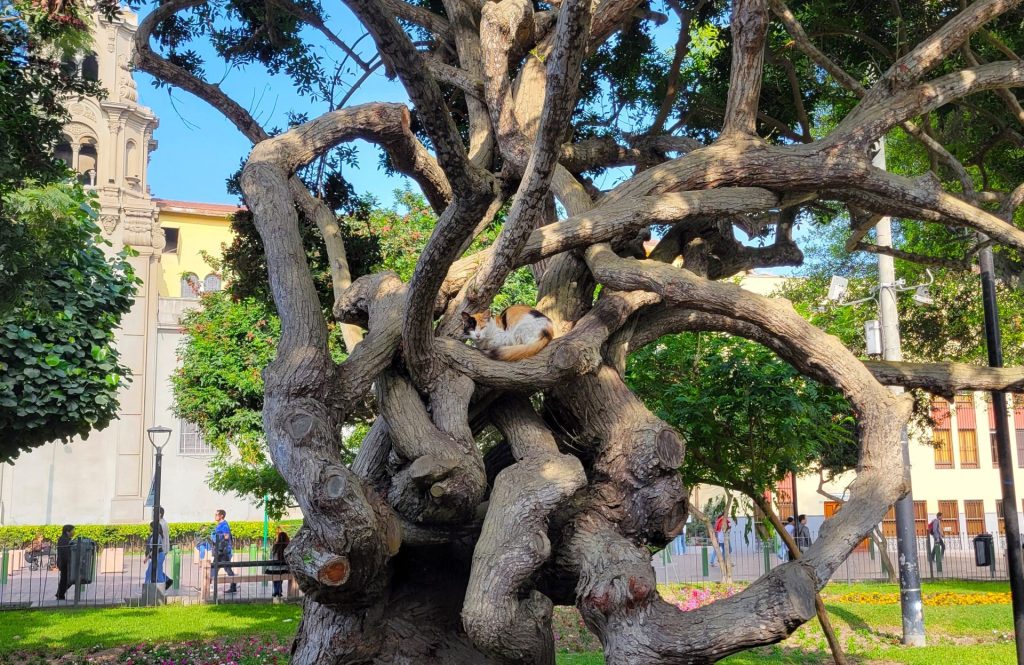
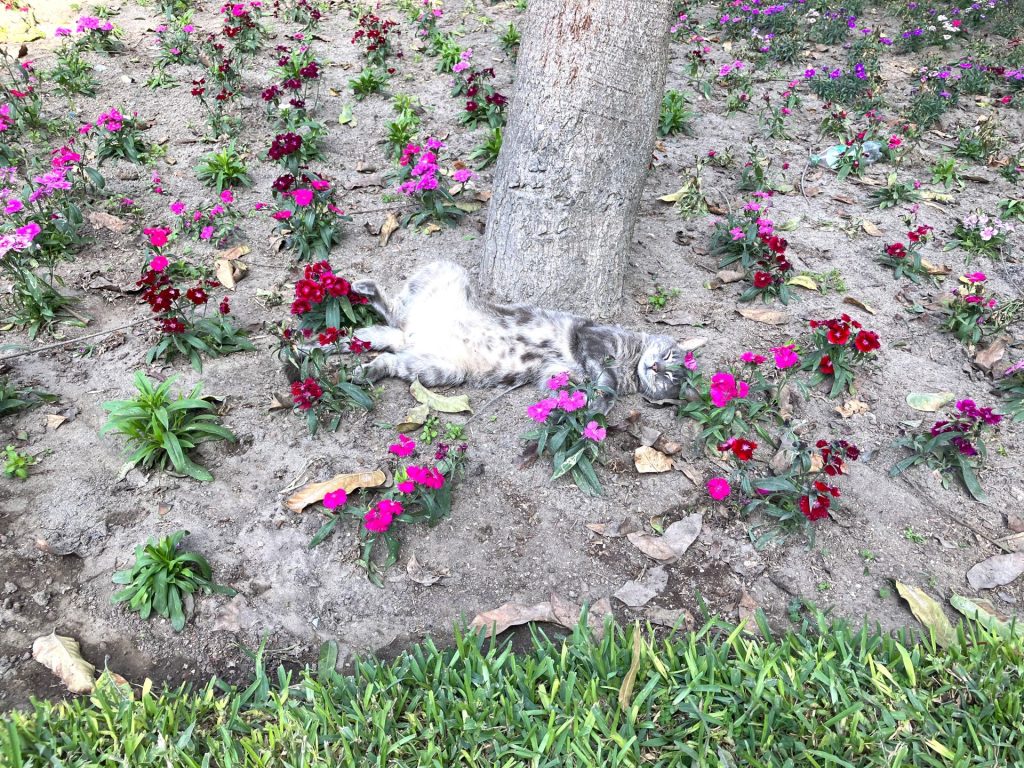
Abundant Produce
We found a great supply of both summer and winter produce. There would be gorgeous watermelons sitting right next to a huge pile of mandarin oranges. We found a lot of beautiful asparagus too, which is normally a spring crop. There were a number of traditional Chinese ingredients available as well, like snow peas, bean sprouts, and napa cabbage. I guess seasonal produce doesn’t mean much near the equator and we were very happy with the uncommon mix.
Naturally, we also ate a bunch of potatoes. According to the International Potato Center, Peruvians cultivate over 4000 different varieties of potatoes. 4000! We only found a fraction of them, but did enjoy the diversity. There was a noticeable difference in flavor and texture between the 7 or 8 types we were able to sample. We both agreed that the papa negra version was our favorite.

Public Transit And Traffic Noise
What passes for public transit are mostly buses that were built at the dawn of internal combustion engines. These old behemoths limp along all over the city, belching out thick black clouds of exhaust whenever accelerating or going uphill. Most of these buses are privately owned, resulting in a lack of a comprehensive metro system and consequently, most people drive everywhere. This often causes massive traffic build ups, further contributing to the overall air quality problem.
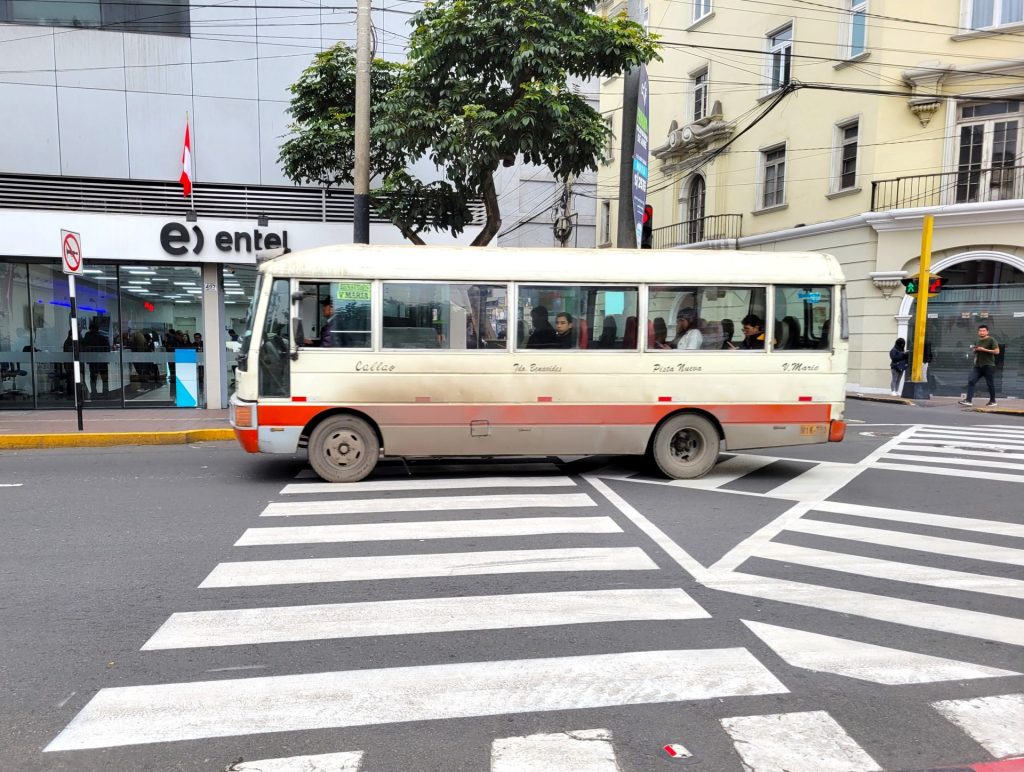
This terrible traffic is the norm in Lima, and it has become customary for every single driver to use their horn at the slightest delay, which is all the time. I think honking the horn while driving must be a kind of national pastime. It’s almost comical in a sense, as many of the horns we heard barely work anymore from constant overuse. Instead of an alerting blast, it’s more of a sad little whine. Less funny is the near constant source of noise pollution that is joined by the air pollution, which is why the parks were so valuable and popular.
There is one newer bus line that began in 2010 and mostly functions like a subway train. The Metropolitano is built into the middle of the highway running from Miraflores and Barranco into downtown. The buses have their own dedicated lanes, and the entrances to the bus stops are turnstiles using a metro card from the overpassing roads above. The card itself costs 5 Soles (about $1.25) and each ride is 3.50 Soles. The cards can be purchased or recharged at a vending machine in any station and a single card can be used for multiple people. We used these routes (Ruta A and Ruta B) to get to the downtown area where we found a few really nice museums.
Lima Museum of Art (MALI)
The best museum in town is the Lima Museum of Art, or the MALI as it’s called. It features a wide variety of art, including extremely well-preserved examples of indigenous pottery and many impressive weavings. There were plenty of English language explanations about the usage and significance of these items on display. The paintings were also quite interesting and most were by Peruvian artists.
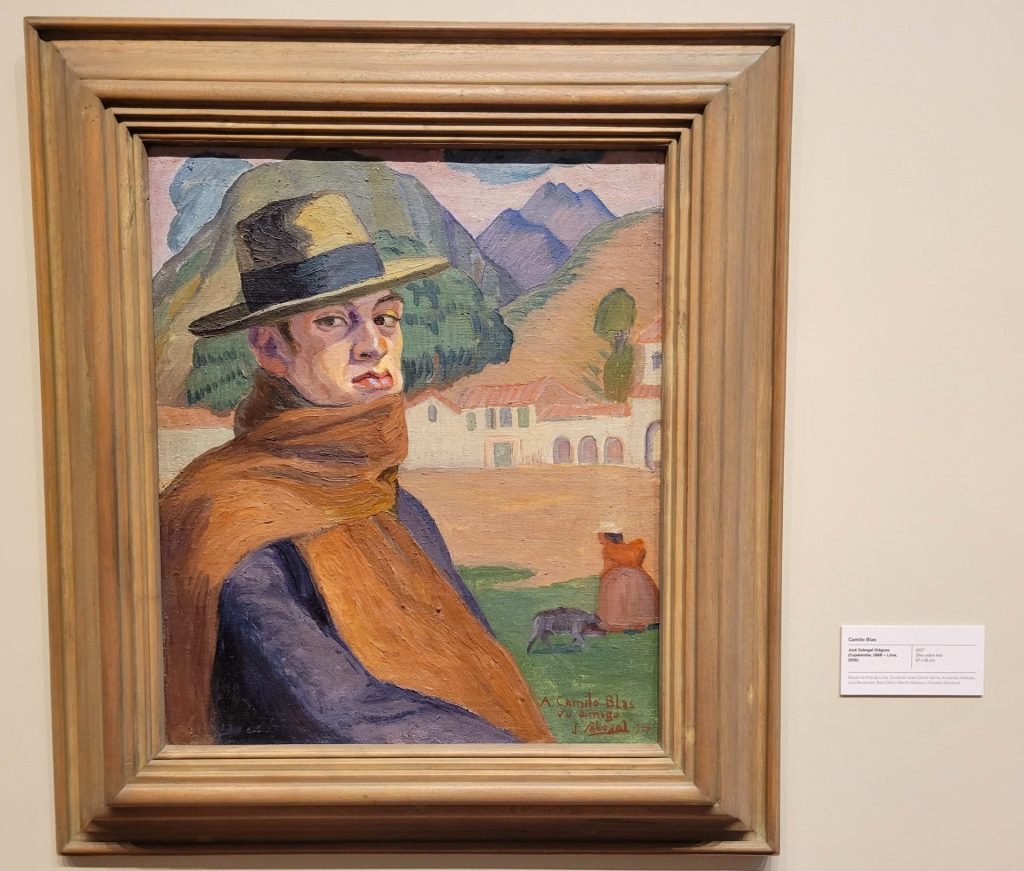

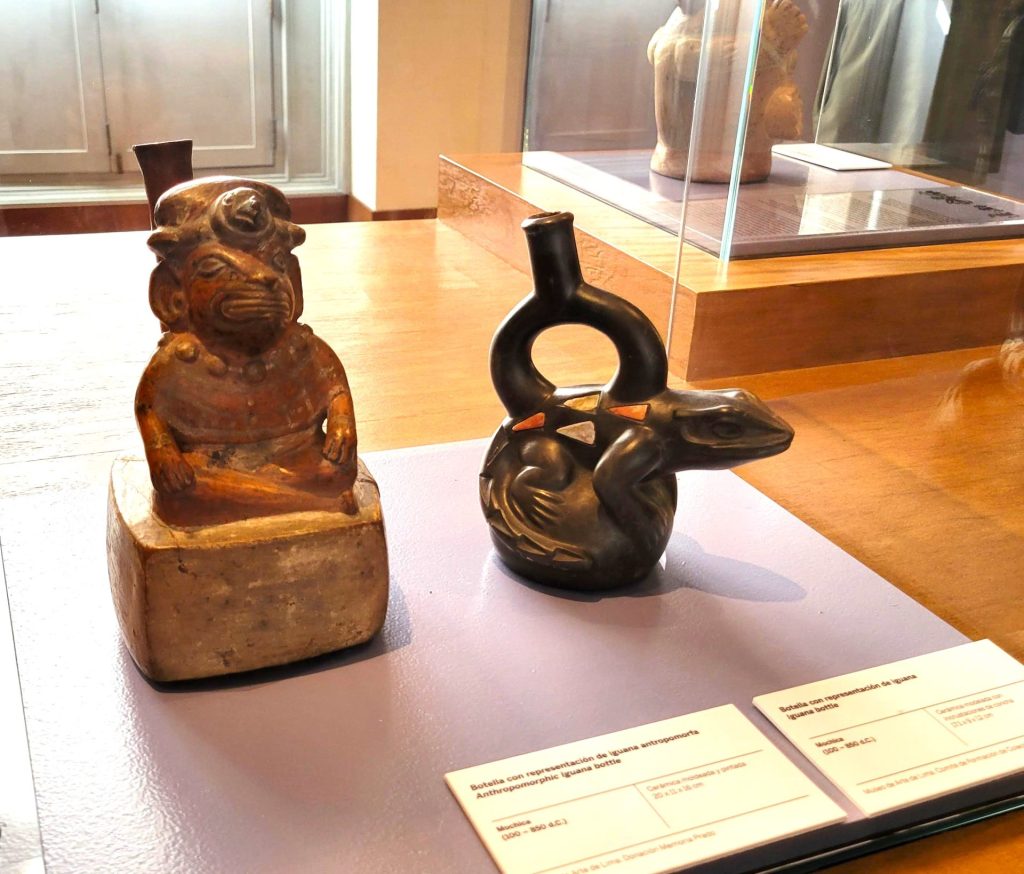
Over the years, we’ve been to many museums and have seen countless religious paintings. So much so that it’s pretty much just repetitive at this point and no longer interesting to see yet another painting of baby Jesus. However, the religious paintings inside MALI actually offered something new. Their style was a lot more intricate and interesting, so much so that I actually paid attention. I consider that a big win for this museum.
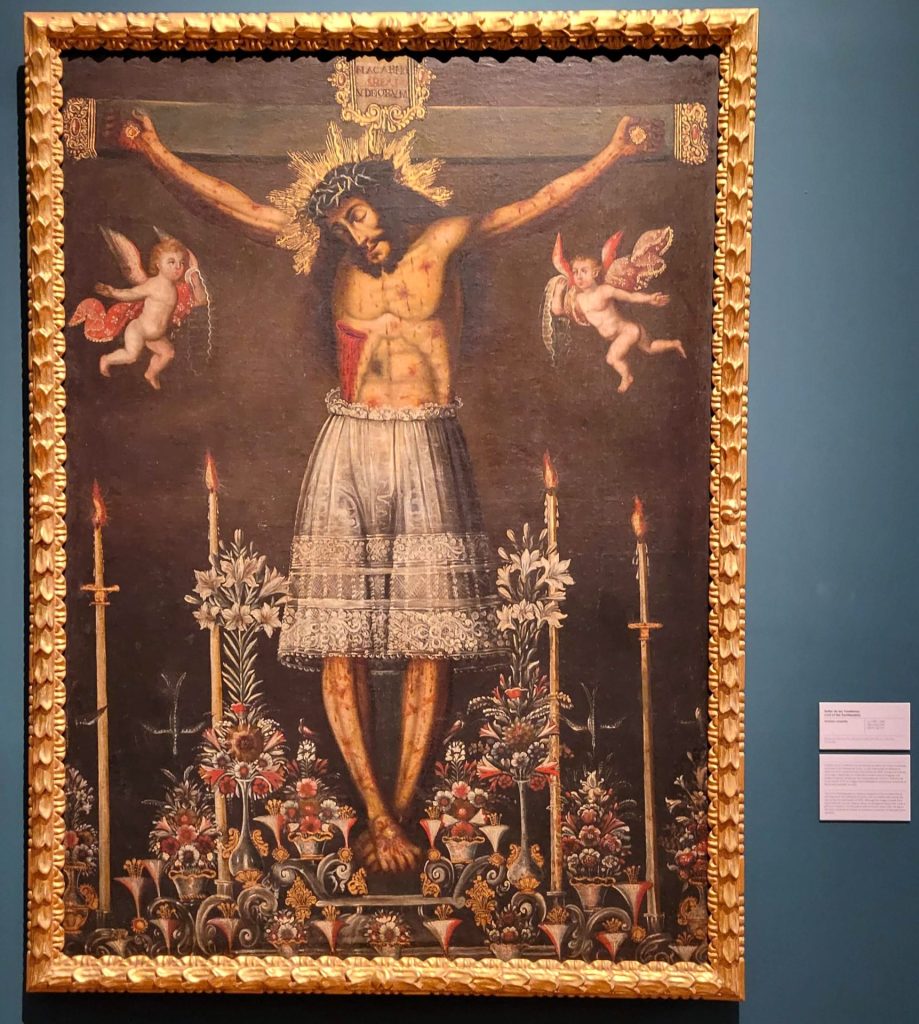
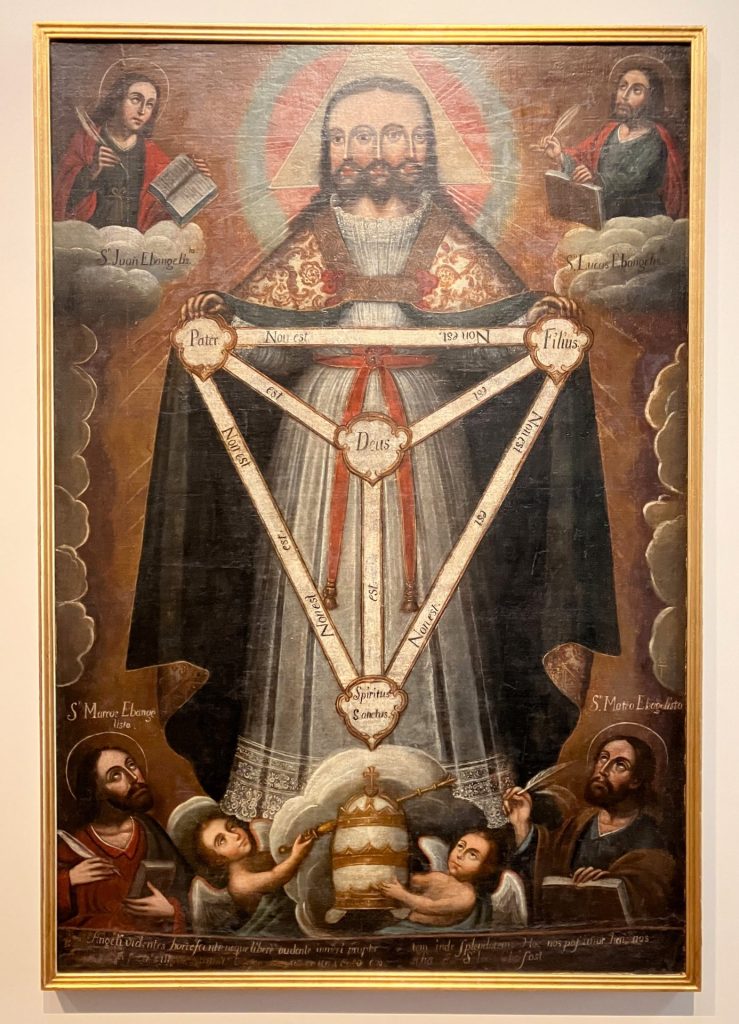
Lima Metropolitan Cathedral
Established by famous Spanish explorer and founder of Lima Francisco Pizarro, the Lima Metropolitan Cathedral is a combination worship building and museum. They have many religious artifacts and art, clothes and jewelry worn by Pope John Paul, and a number of ornate shrines. The cathedral is huge and more than just the church, with many side rooms containing all sorts of art and artifacts. It’s easy to spend an hour or more walking around and marveling at everything.

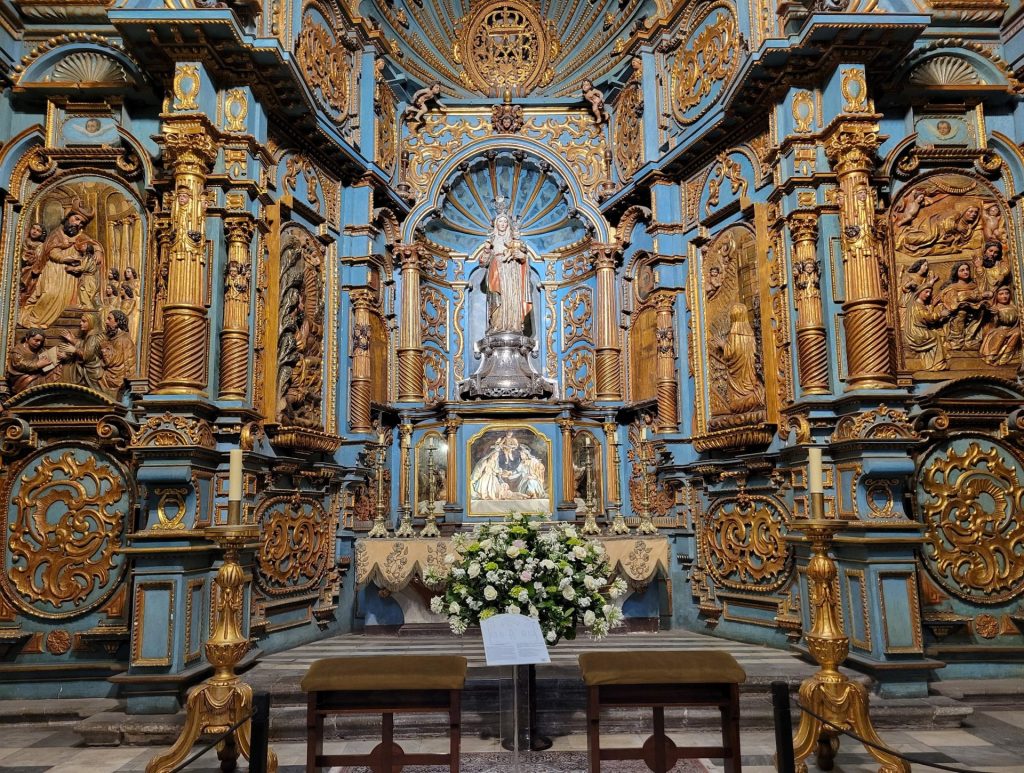
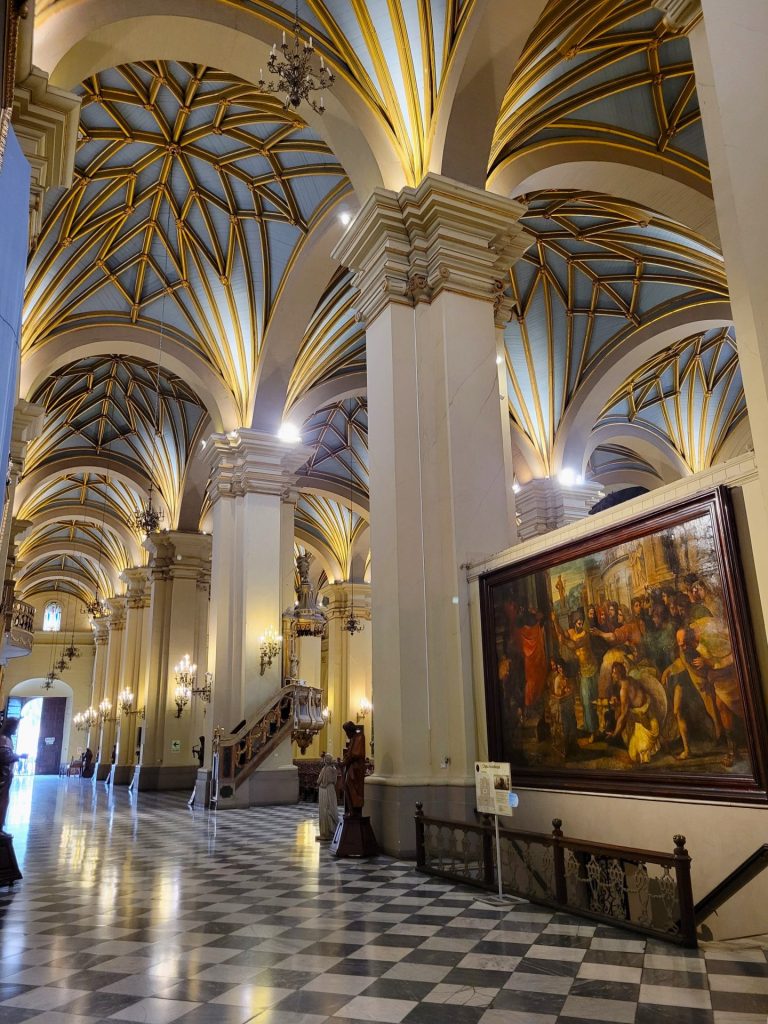
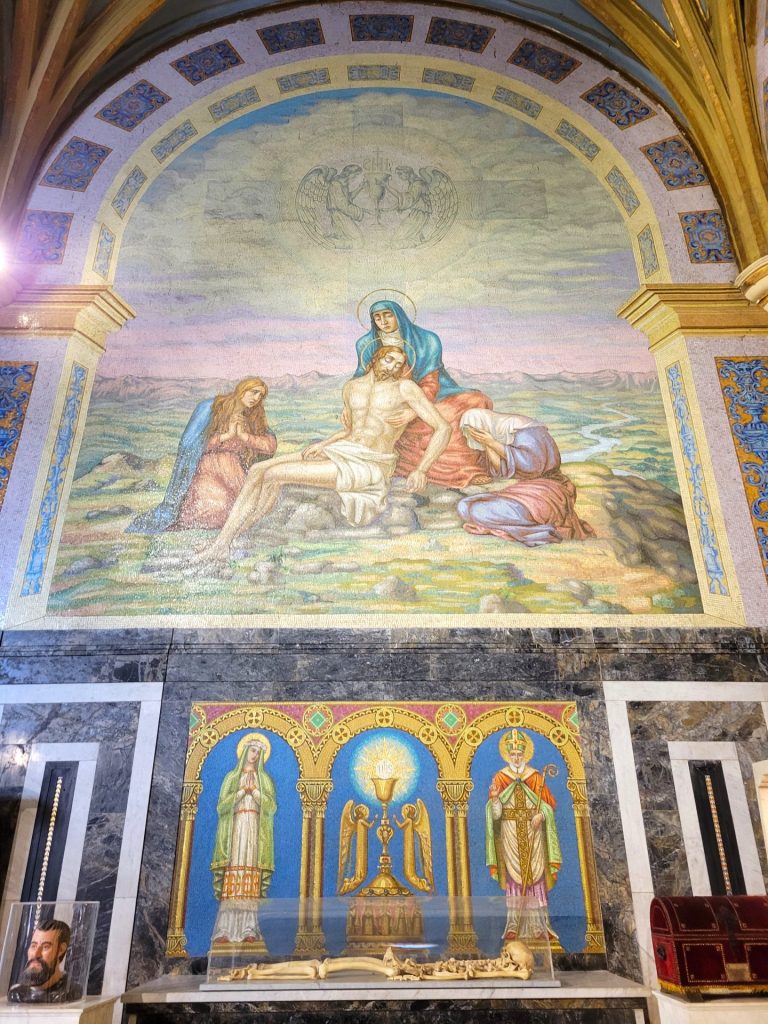
Museo Central
The Museo Central, or MUCEN, houses a variety of art styles inside of a former bank. This interesting venue for a museum gives it a unique feel. Spanning three floors, we enjoyed a variety of work from local Peruvian painters, displays of traditional clothing, indigenous pottery, historical coinage, and more. To our taste, the local painters were the best, but seeing all of the precious gold and silver creations stored in the old basement vault was pretty neat too. It’s also free, so it’s tough to beat.
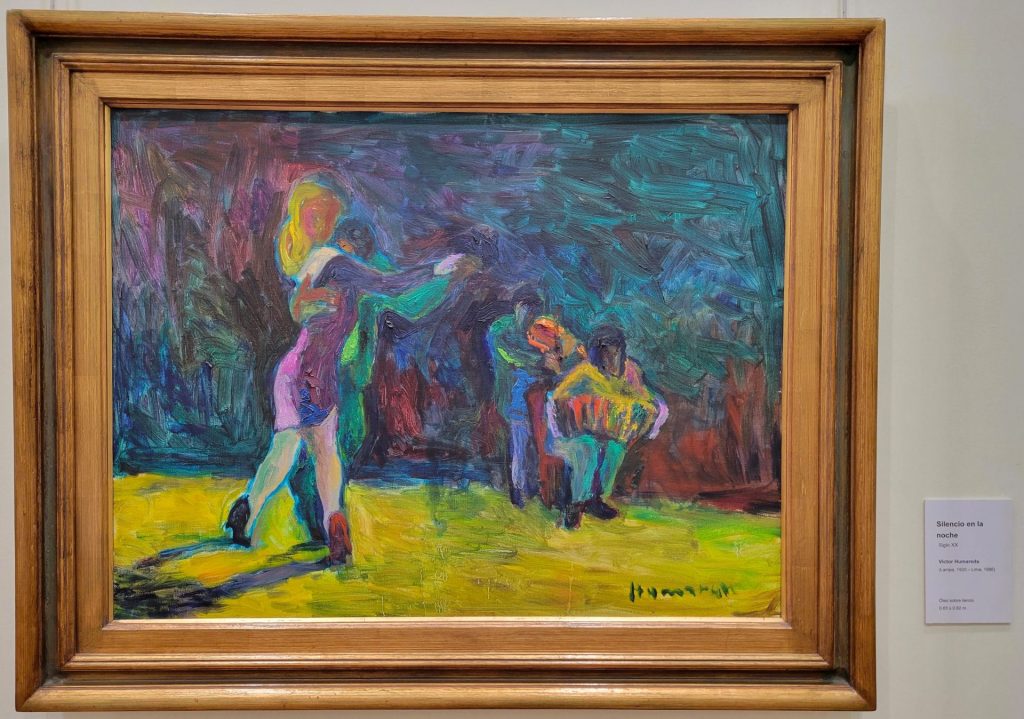
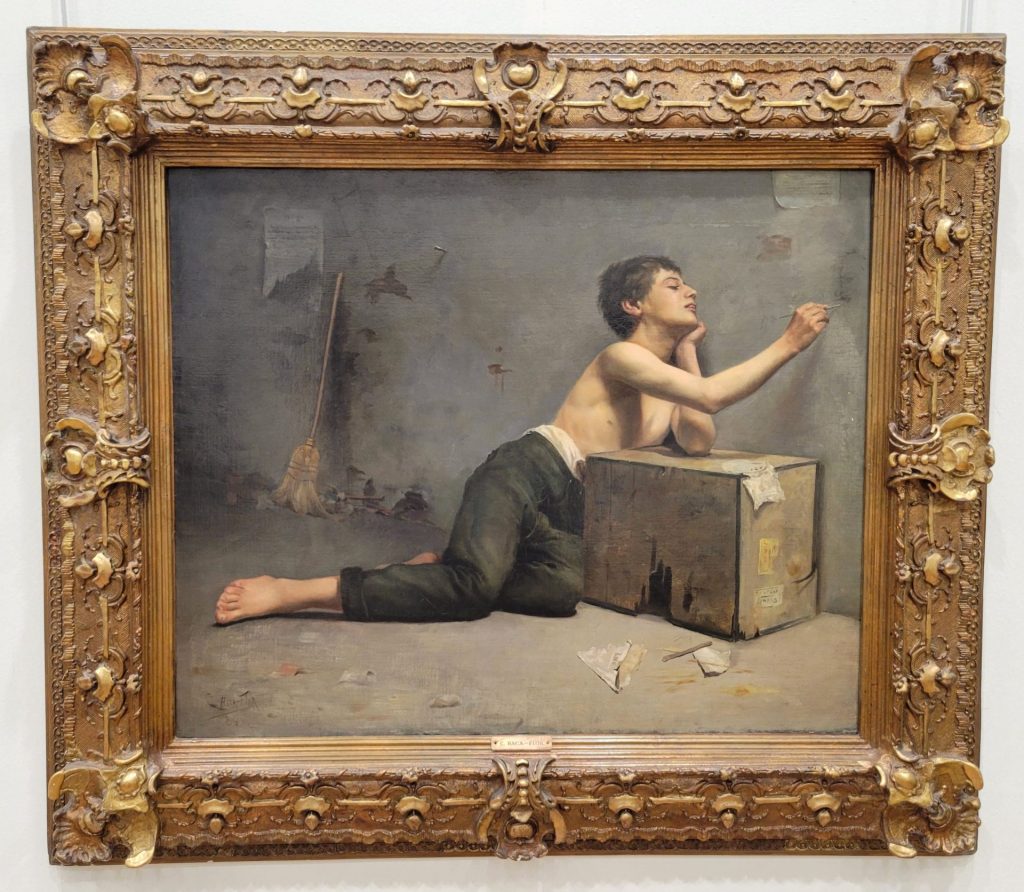
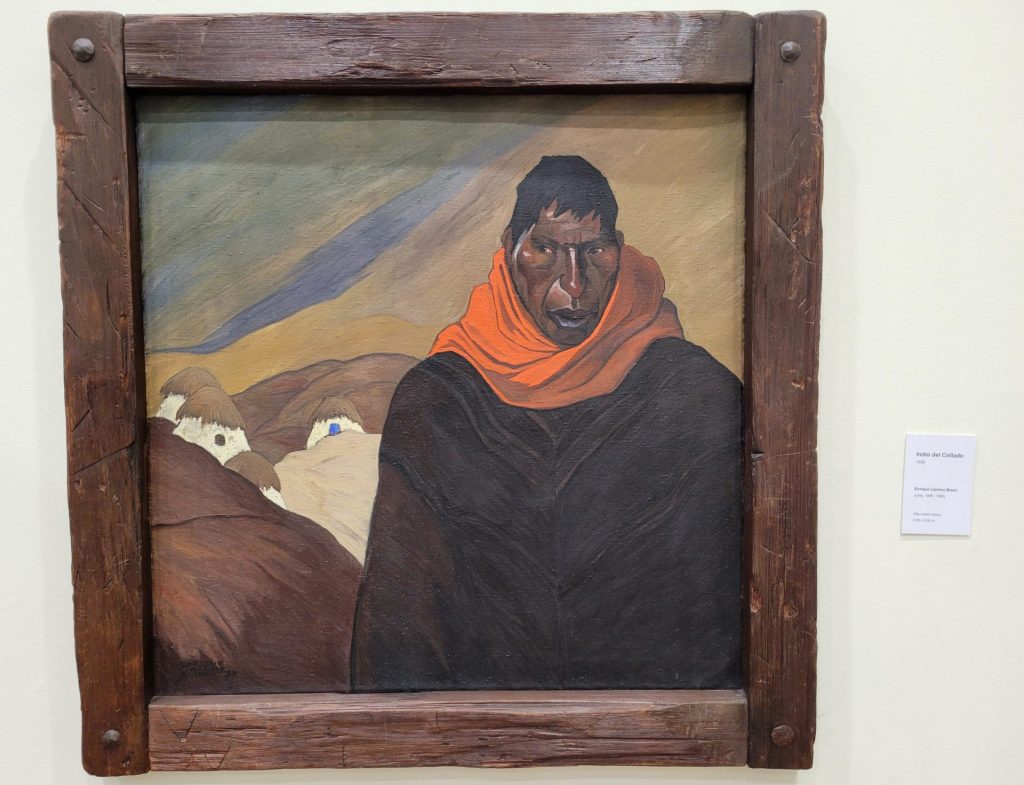
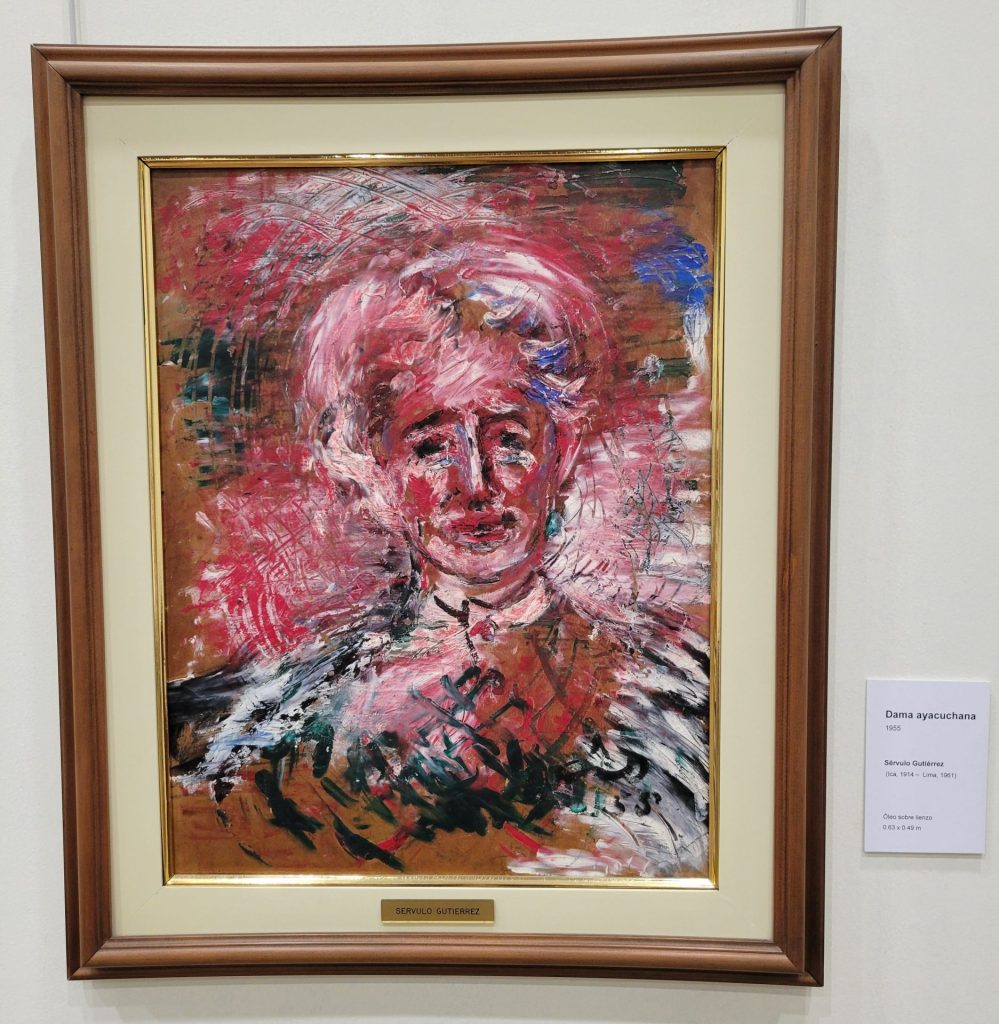
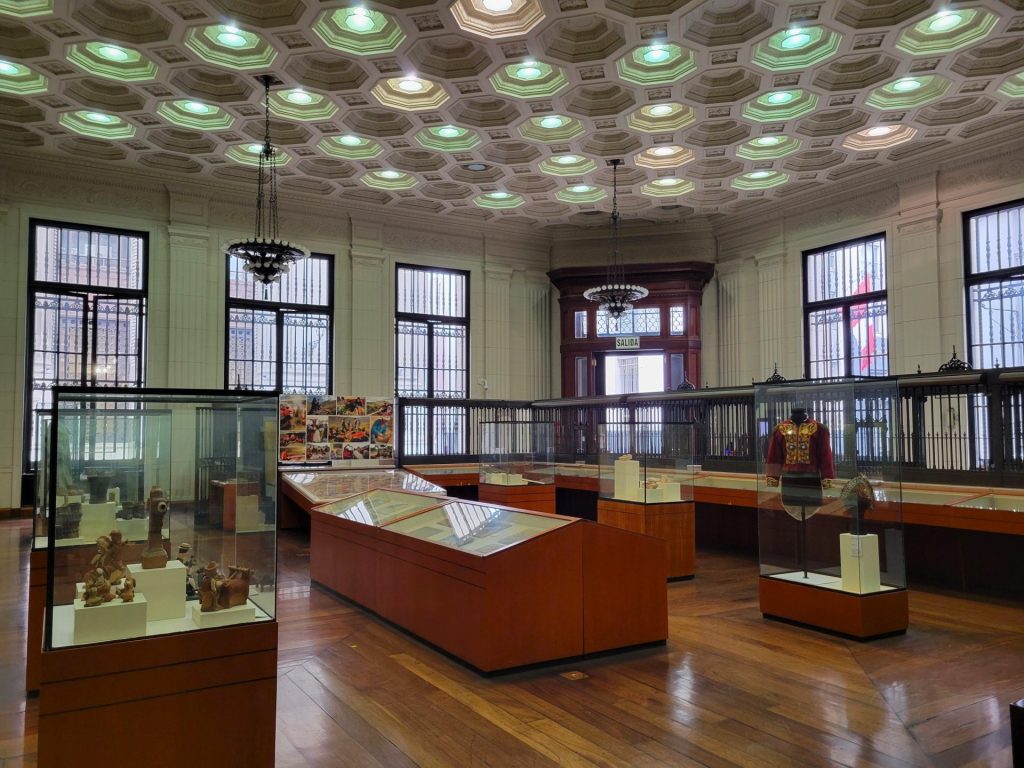
Jade Rivera Museum
Back in the Barranco neighborhood, we stumbled upon the small Jade Rivera museum. This stop was definitely one of the highlights of our time in Lima. The museum explored how Jade began his work as a graffiti artist, transitioned to street art and murals, and eventually evolved to be a full fledged painter. Viewing this artistic transition was very interesting, and some of his murals and street art can still be found throughout the city. We were the only visitors when we went, and as such the helpful docent was eager to explain the details of some of the pieces that we really liked. As fans of urban art, we really enjoyed Rivera’s work.
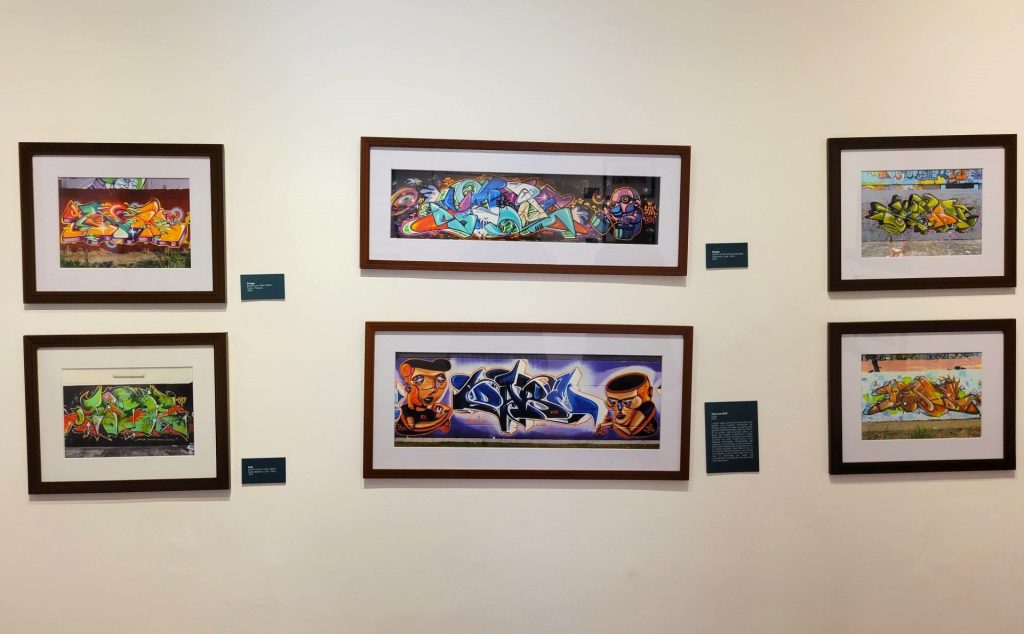
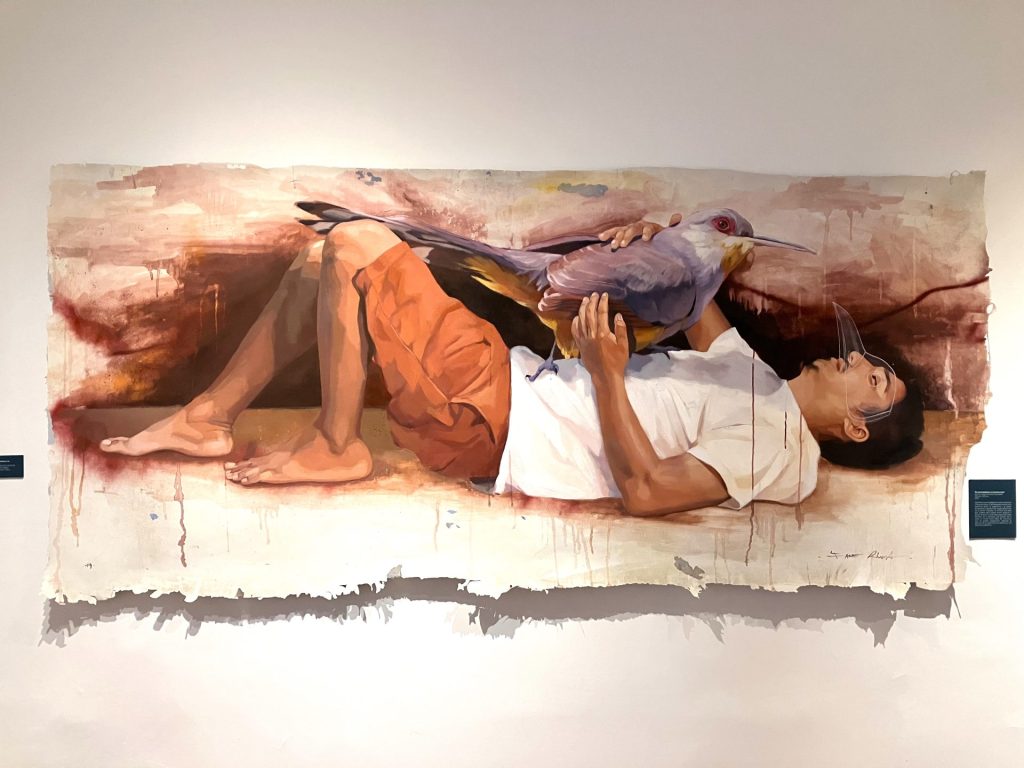

Also in the Barranco neighborhood is the Jade Rivera gallery that has a bunch of copies of his work for sale, but it’s not nearly as interesting as the museum itself. It is in a much more popular location however, so I think most people probably only visit the shop. But it’s a disservice to skip the museum if his work is interesting to you.
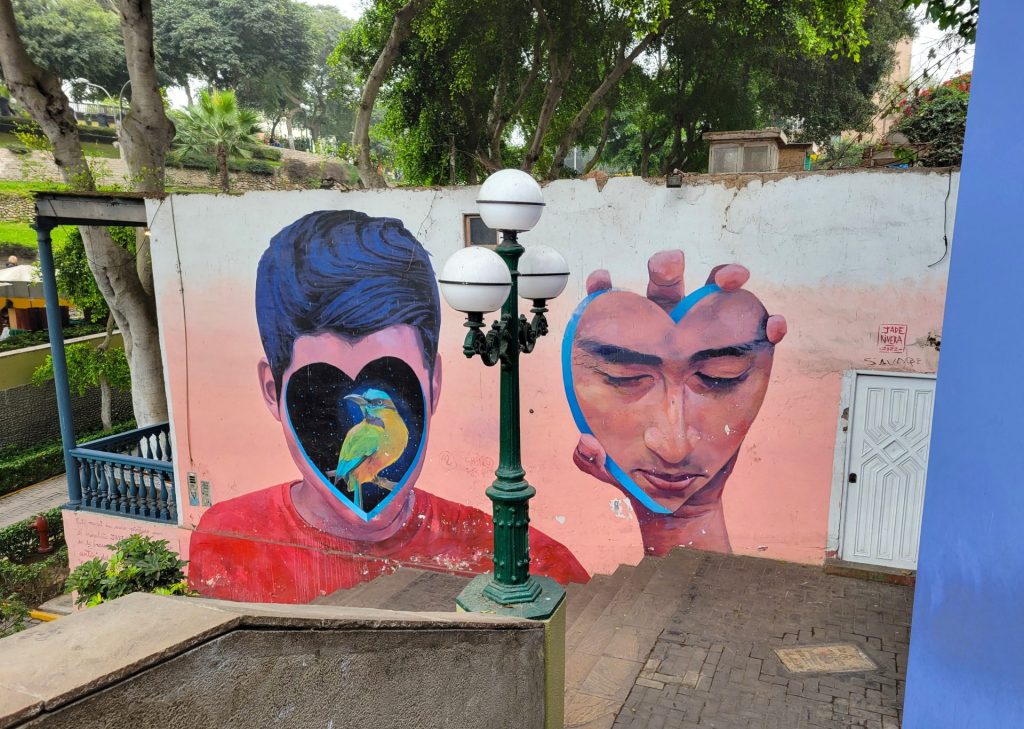
Pedro de Osma Museum
Housed in a converted mansion, the personal collection of Pedro de Osma is now on display to the public. Pedro de Osma was a lawyer, art collector, and mayor of Lima in the early 1900s. The art collection is mostly religious-based, and was not quite as interesting to us as the works in the Lima Art Museum. But the actual mansion and outbuildings that the collection is displayed in were gorgeous. The grounds were very beautiful as well and we saw multiple hummingbirds swarming the abundant flowers and plants.
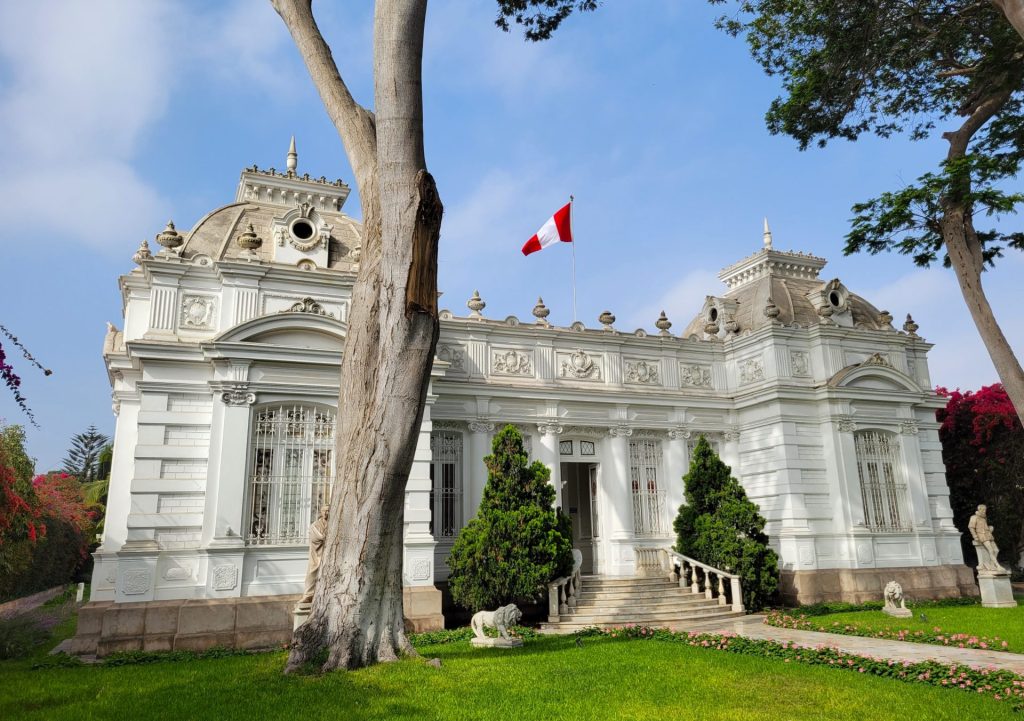
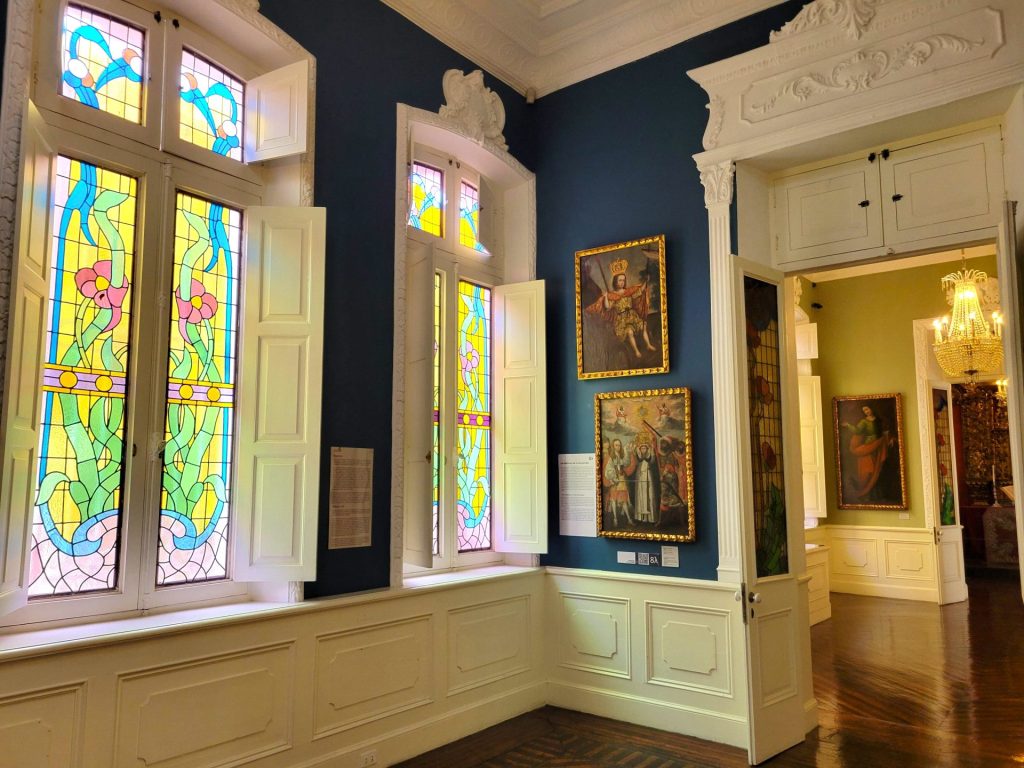
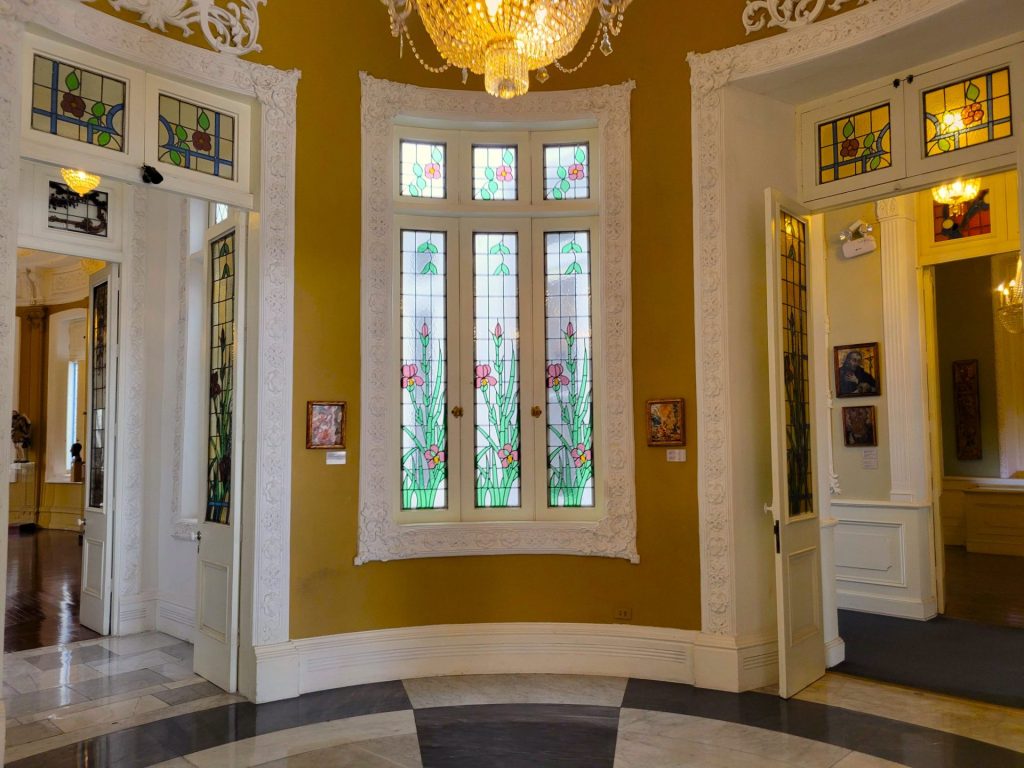
Where We Stayed
We rented a large 2 bedroom 2 bathroom apartment in a new building in the heart of the Miraflores neighborhood. The location was top notch as it was only a couple blocks from the cat parks and also near the only useful public transit bus line. As mentioned, the windows were completely useless at blocking sound, but luckily there wasn’t a construction site next door or anything, so it didn’t bother us too much. Along with the rest of the building and probably all of the others in close proximity, we did get to listen to our neighbor practice her voice lessons most nights, which we found entertaining. La la la la la la la.
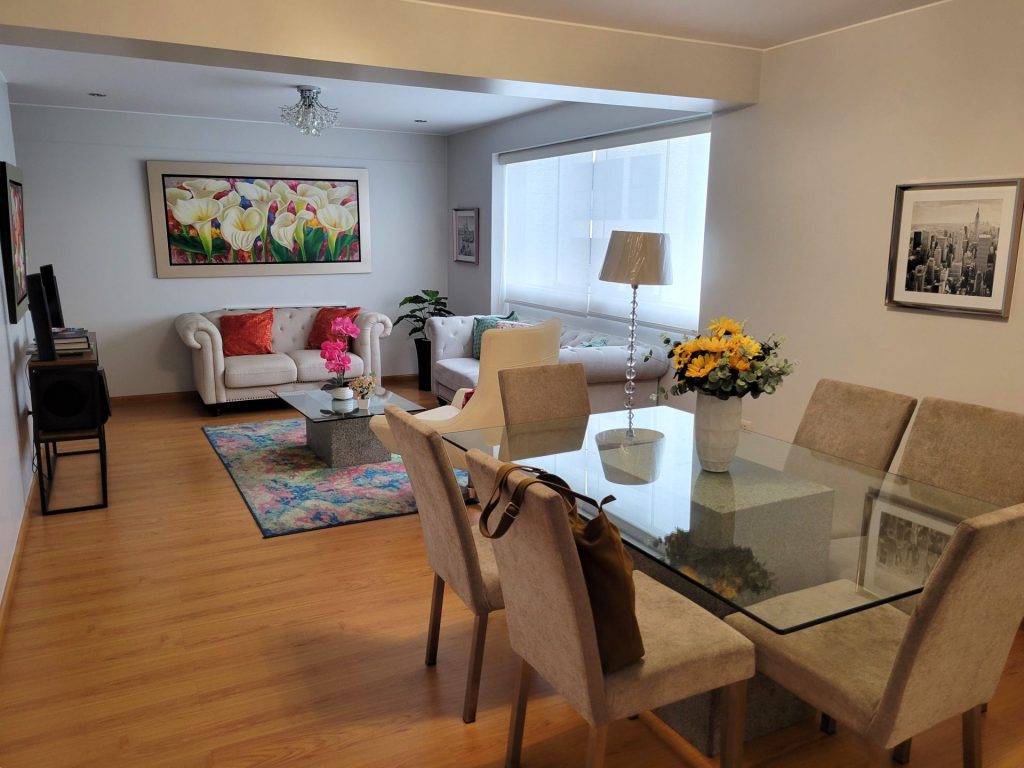
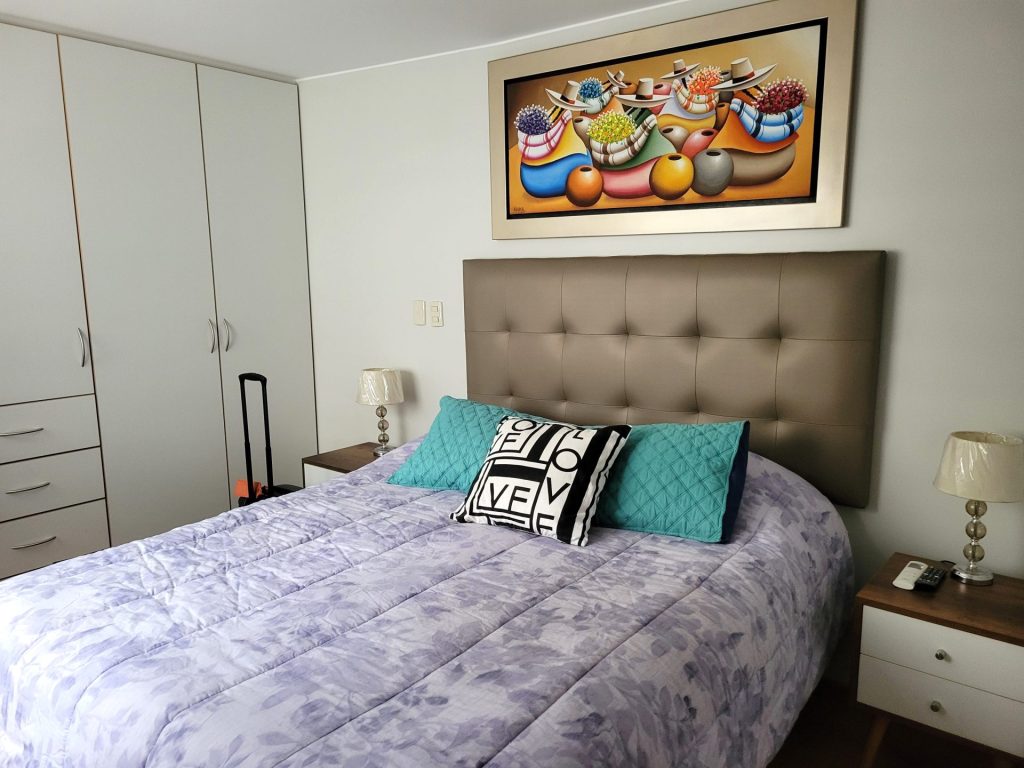
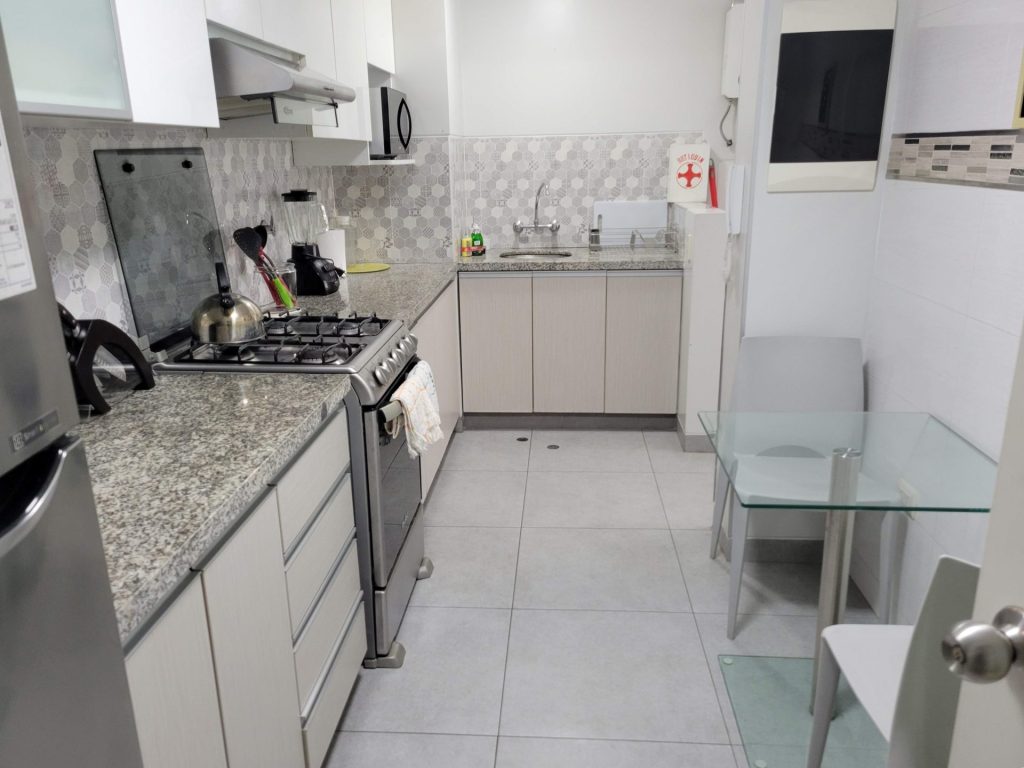
What We Spent
We found prices in Lima to be pretty reasonable, although our total spending doesn’t really reflect that. The amount is inflated since we paid for flights from Montevideo instead of using airline miles. We were also due for routine dental cleanings, which cost us $330. Our large apartment was a bit of a splurge at $1322 for our 30 night stay.
Our food spending came to $466, which was almost exclusively at our main grocery store, the Wong. They had an amazing bakery and a vast produce section, so we never even made it to a market or restaurant. I feel a little bit bad about that, but it was truly one of the best grocery stores we’ve ever been in. Adding in our regular bills like health insurance and MLB.tv brought our grand total spend to $3316 or almost $111/day.
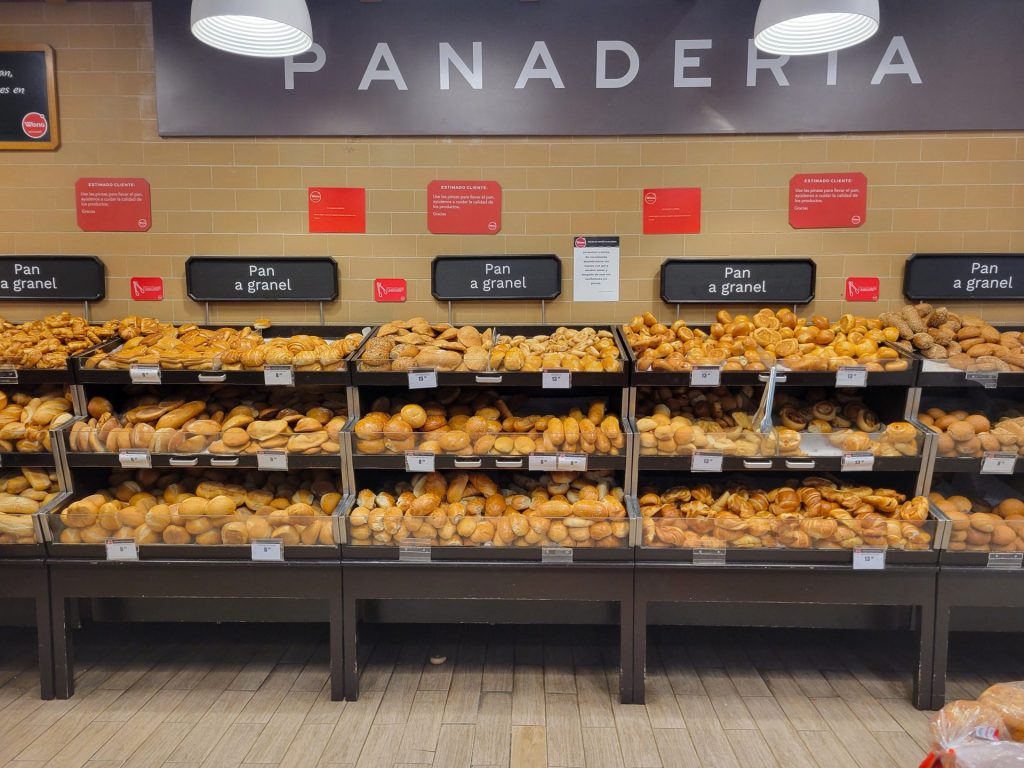
Overall we enjoyed the friendliness of both the people and animals that we encountered in Lima. That cat park was really something else and the bird watching in the other parks was entertaining as well. We liked most of the museums that we visited. We ate great fresh produce, including several new varieties of potatoes. The noise and air pollution were serious problems though, and both need massive improvements if Lima wants to be a more attractive destination. While these issues certainly detracted from our enjoyment, I thought that our stay had enough positives to make Lima a worthwhile stop. Of course it might be worth picking a different destination or limiting your time if you’re not a cat person. They really helped us focus on the silver linings.
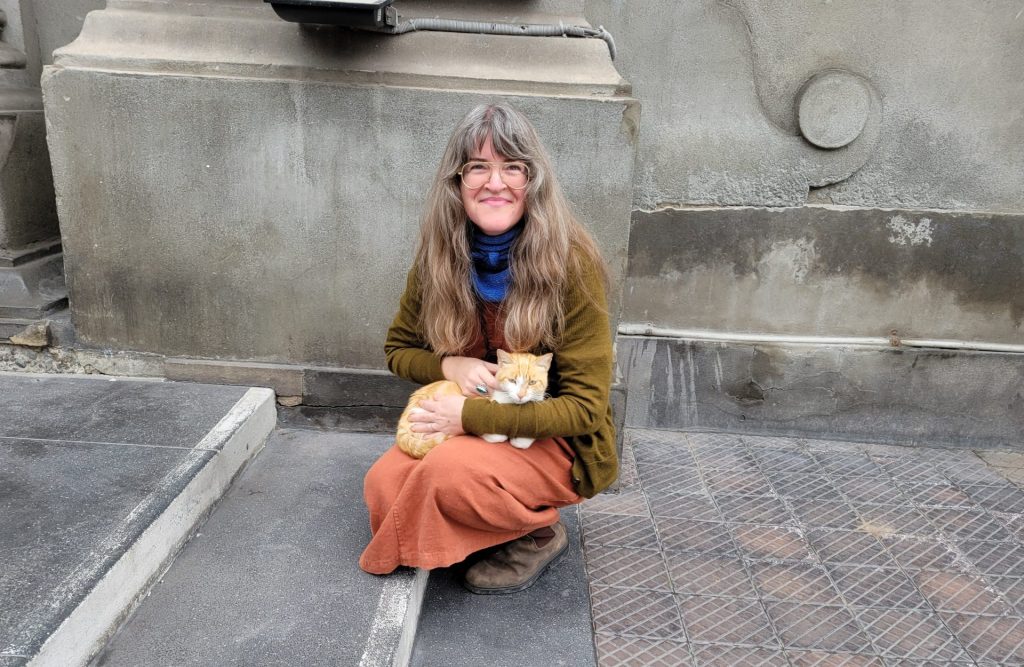
Thanks for the post..! How prevalent was tap n pay or did you have to use local currency??
Hi Ryan,
Lima doesn’t have any surprises in this area. The medium and large businesses take CCs while the small ones and solo vendors only deal in cash.
We just found your site and have been enjoying following your travels. My wife and I are also slow traveling the world, currently house-sitting in Anchorage, but planning to head to PV in Mexico in October. Best wishes.
Hi Daniel,
Thanks for stopping by. I hope you enjoy your travels as well. Vallarta should be a nice stop.
Hi Eric! Love your post. Lima looks beautiful. I would definitely just be stuck in that park petting cats all day. Kind of early to ask this, but do you plan on making a 5-year in review? Would love to hear your thoughts on your journey the past 5 years – what you’ve learned, what you thought vs. reality for perpetual slow traveling + financially.
Thanks Melissa. I am (slowly) working on something that’ll be a bigger summary-type anniversary post. So there should be something eventually.
That was definitely a different adventure for you and Katie. I really enjoyed the pictures of the Metropolitan Cathedral. Beautiful, beautiful!
Looking forward to seeing you both soon.
Hi Glenda,
That cathedral was really great. It was the best one we’ve seen since Mexico City.
Eric, I’m a friend of your mom. I enjoy world travel and enjoy following your journey. I hope that you will be able to see Machu Picchu while you are in Peru. It is one of my favorite sites ever. If you want to be amazed with ancient technology, please go. If you go, go on the first train of the day and spend the day. I was their for the day and didn’t see it all. Note that you are only allowed to go out of the area once to use the bathroom. The second time, you aren’t allowed back in.
Hi Jill,
Good to hear from you again. We did make it to Machu Picchu. I’ll have all of the gory details included in my Cusco post which should be coming shortly.